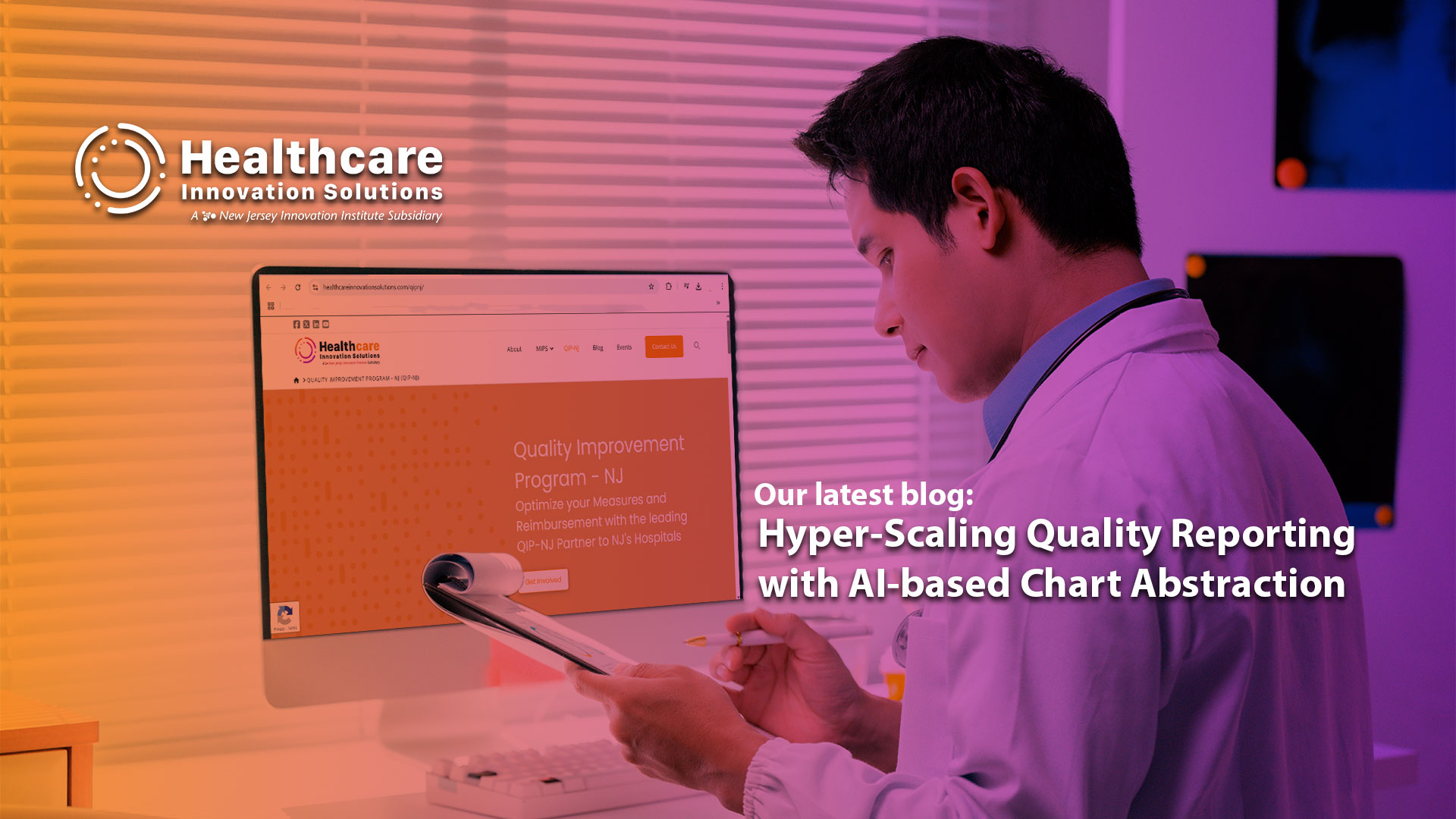Patient chart abstraction has become integral to many high-value functions within hospitals and health systems. All hospitals need to report their performance on key quality measures in order to maintain certifications, submit to registries, participate in population health initiatives (such as QIP-NJ) and Value-based Care (VBC) contracts, to name only a few use cases. For the most part, chart abstraction has been performed by nurses or certified quality reporting and coding professionals requiring manual review of patient charts which is time-consuming and, quite often, prone to errors. However, the integration of Artificial Intelligence (AI), particularly Large Language Models (LLMs) and Natural Language Processing (NLP), is revolutionizing this field. In this article, we will provide an overview of how AI solutions.
Enhancing Efficiency and Accuracy
AI-driven NLP tools can swiftly process vast amounts of unstructured data within Electronic Health Records (EHRs), such as physician notes and discharge summaries. This automation significantly reduces the time required for data abstraction and minimizes human errors associated with manual chart reviews. For instance, a study demonstrated that predictive modeling of EHR data achieved higher degrees of accuracy over manual chart reviews in predicting individualized treatment responses, highlighting AI’s potential in processing clinical data both structured as well as unstructured.
Standardizing Medical Terminology
Medical records often contain varied terminologies for the same condition, leading to inconsistencies. NLP algorithms can harmonize these differences by mapping synonymous terms, ensuring uniformity across datasets. For example, NLP can recognize that “heart attack” and “myocardial infarction” refer to the same condition, enhancing the reliability of extracted data.
Improving Clinical Decision Support
By accurately extracting and standardizing patient information, AI-powered chart abstraction enhances Clinical Decision Support Systems (CDSS). This integration provides healthcare professionals with timely and precise information, aiding in informed decision-making and potentially improving patient outcomes. This capability is integral to performance and success in population health and value-based care programs, like the emerging TEAM model from CMS.
Shifting the Paradigm to Prospective Attribution
Another high-value use case for AI-based chart abstraction, utilizing Machine Learning models, is the ability to perform complex inclusion/exclusion analysis against vast amounts of data to make predictions and gain visibility about possible patient attribution. This becomes an important tool for Quality, Care Management and Finance leaders when performance in population health and VBC arrangements is critical to success. This NJII blog post explores this topic in more depth.
Comparative Studies
Several studies have demonstrated that AI-based patient chart abstraction using Large Language Models (LLMs) and Natural Language Processing (NLP) can perform comparably to, and in some cases better than, manual abstraction by healthcare professionals:
- Accuracy and Speed: A ASCO 2024 study showed that an AI system achieved non-inferior accuracy compared to human abstractors while significantly improving speed.
- Deep-Learning NLP Performance: Research published in JAMA Network Open evaluated a deep-learning NLP system and found it had favorable characteristics for measuring electronic health record outcomes at scale, suggesting potential advantages over manual abstraction.
- Zero-Shot Learning NLP Tool: A study validated a zero-shot learning NLP tool for data abstraction from unstructured healthcare data. The tool demonstrated comparable accuracy to human abstractors with significant time savings, highlighting its efficiency in processing medical records.
NJII Healthcare’s AutoChart AI Solution
NJII Healthcare provides an innovative “ChatGPT-like” solution, AutoChart AI (powered by Cognome), which allows chart abstractors to scale up their productivity while reducing workload by 10x or more. AutoChart AI combines a highly accurate LLM, trained on over 8 billion medical and coding parameters, with their deep-learning NLP app which can automatically abstract and code unstructured data from notes. AutoChart AI can also automatically populate most registries and certification portals. You can find out more about AutoChart AI by contacting one of NJII’s Quality Professionals, many of whom are nurses and experienced abstractors.
Conclusion
Integrating AI, particularly LLMs and NLP, into patient chart abstraction offers substantial benefits, including increased efficiency, enhanced accuracy, standardized data, and improved clinical decision support. As healthcare data continues to grow, these technologies will play a pivotal role in optimizing data management and patient care.
These studies indicate that AI-based chart abstraction systems, leveraging LLMs and NLP, can match or exceed the performance of manual abstraction by healthcare professionals, offering benefits in both accuracy and efficiency.
With the 2025 performance year already underway, learn how AutoChart AI can scale-up any quality program that requires patient chart abstraction, like QIP-NJ.
Contact one of our Certified Quality Professionals or call us at 973-642-4055 today to learn more!
